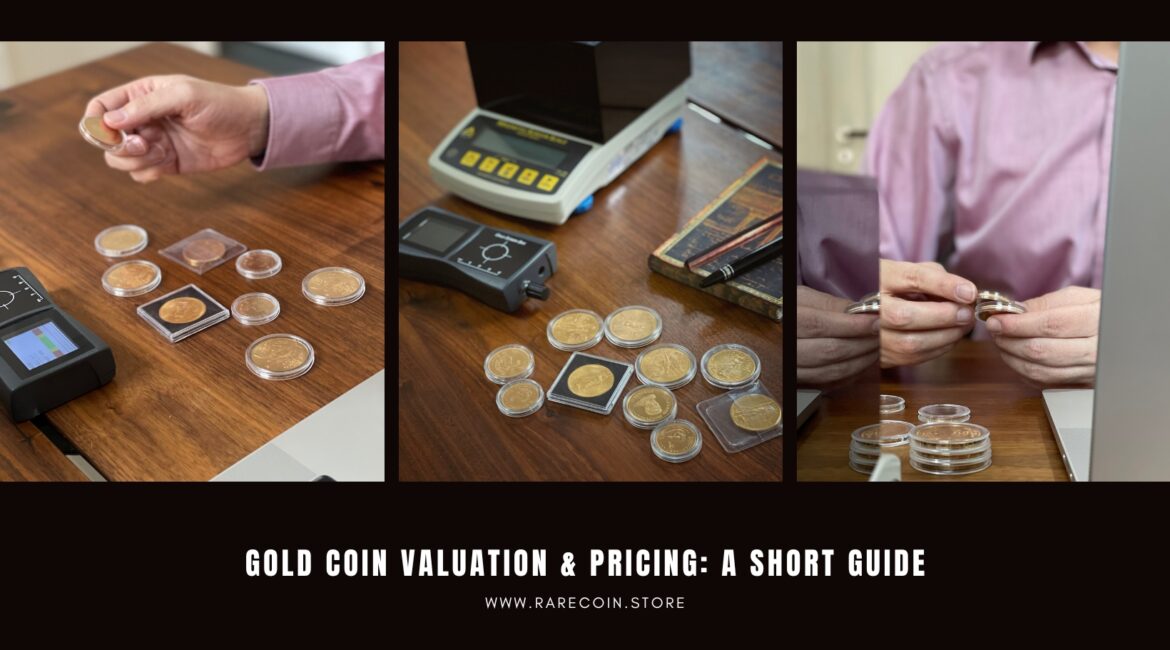The appeal of gold coins goes beyond their luster; they are often viewed as valuable assets that can stand the test of time. Whether you are an investor, a collector, or simply someone who has inherited a piece of history, it is important to understand how gold coin grading works. This guide looks at various aspects of gold coin pricing including coin grading, value guides, rare coin prices and determining a coin’s value.
coin judging
The first step in determining the value of a gold coin is to have it appraised. This is usually done by an experienced numismatist or a certified appraiser. The coin is examined for various factors, such as e.g. B:
- Condition : Condition, rated on a scale of 1 to 70 (this scale is used by PCGS and NGC graders), is a determining factor in a coin’s value.
- Rarity : The rarer a coin is, the more valuable it usually is.
- Demand : The more desirable a coin is, the higher its potential price.
- Metal content : The weight and purity of the gold in the coin also play a role in its value.
Professional appraisers often use sources such as the Red Book (for US coins) or databases from grading agencies such as Numismatic Guaranty Corporation (NGC) or the Professional Coin Grading Service ( PCGS ) to accurately determine a coin’s value.
Coin Value Guide
There are several guides and resources that can help you understand the value of a gold coin. These include:
- Online Auctions : Sites like eBay can provide a rough estimate of the price others are willing to pay for a similar coin.
- Online Price Guides : Websites and databases often provide up-to-date information on a coin’s market value.
- The Red Book : An annually updated price guide for all types of U.S. coin.
Keep in mind that the prices in these guides are usually used as a starting point for negotiations and do not necessarily reflect the actual selling price.
Rare coin prices
The price of a rare gold coin can be significantly higher than that of a bullion coin. The rarity may be due to:
- Limited Mintage : The coins are only produced in limited numbers.
- Historical Significance : Coins from important eras or events.
- Unique Features : Flaws or unique features can add value to a coin.
Because of these factors, rare coin prices can fluctuate wildly and change rapidly depending on market conditions or new discoveries.
How to rate a coin
Determining the value of a gold coin requires a mix of research and expert opinion. The following steps should help you:
- Preliminary Research : Use online resources, books, and auction prices (additional buyer fees apply) to get an overview.
- Physical Examination : Check for markings, condition and authenticity.
- Consult an expert : For a more accurate valuation, you should consult a certified appraiser or numismatist.
- Get a Second Opinion : Especially with high-value items, a second or even third opinion can be invaluable.
- Stay Informed : Coin values can fluctuate, so it is wise to keep up to date with market trends.
Conclusion
Gold coin grading is a complex process influenced by numerous factors such as condition, rarity and market demand. By educating yourself and getting advice from experts, you can better assess the value of your gold coin, whether you’re looking to buy, sell, or just appreciate its value.
What do you need to know about grading coins and what does PF/PR or MS mean in coin grading? Should I have my gold coins graded / certified? Short Guide – Unraveling the mysteries of coin grading and pricing: from appraisals to determining valueDiscover the new additions to our gold coin collection in the current range!
-
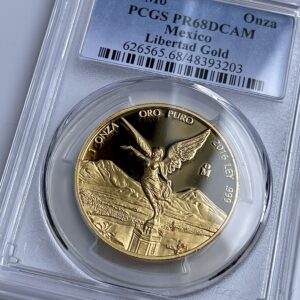
Mexico – 2016 – Libertad – Gold Coin 1 oz Proof – PCGS PR68 Deep Cameo
2.950,00 €plus shippingDelivery Time: approx. 2-3 days (excluding Saturdays, Sundays and public holidays) -
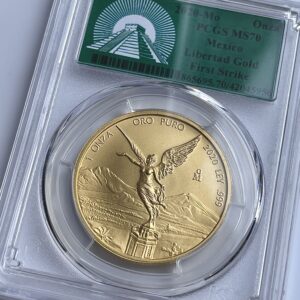
Mexico – 2020 – Libertad – Gold coin 1 oz – First Strike – PCGS MS70
3.150,00 €plus shippingDelivery Time: approx. 2-3 days (excluding Saturdays, Sundays and public holidays) -
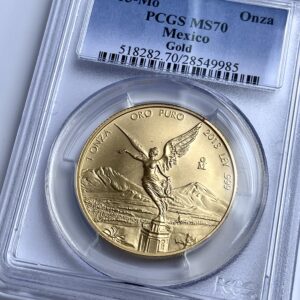
Mexico – 2013 – Libertad – Gold coin 1 oz – PCGS MS70
3.150,00 €plus shippingDelivery Time: approx. 2-3 days (excluding Saturdays, Sundays and public holidays) -
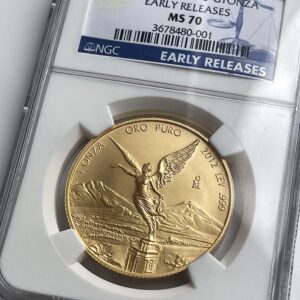
Mexico – 2012 – Libertad – Gold coin 1 oz – Early Releases – NGC MS70
3.150,00 €plus shippingDelivery Time: approx. 2-3 days (excluding Saturdays, Sundays and public holidays) -
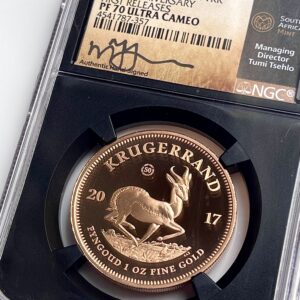
Krugerrand – 2017 – 50th Anniversary – 1oz Gold – First Releases – NGC PF70 UCAM
3.600,00 €plus shippingDelivery Time: approx. 2-3 days (excluding Saturdays, Sundays and public holidays) -
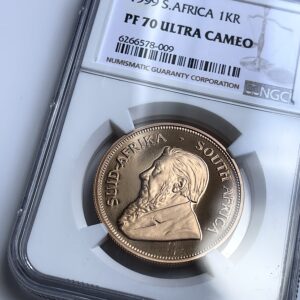
Krugerrand – 1999 – 1 oz Proof Gold Coin – NGC PF70 Ultra Cameo
3.750,00 €plus shippingDelivery Time: approx. 2-3 days (excluding Saturdays, Sundays and public holidays) -
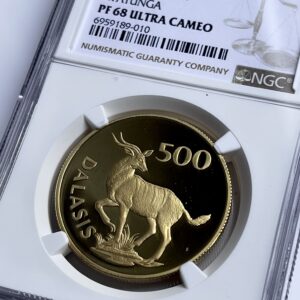
Gambia – 1977 – 500 Dalasis – Sitatunga – NGC PF68 Ultra Cameo
3.200,00 €plus shippingDelivery Time: approx. 2-3 days (excluding Saturdays, Sundays and public holidays) -
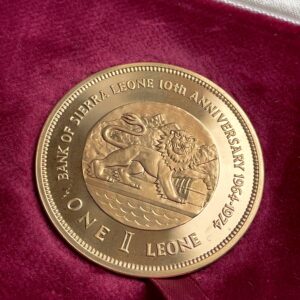
Sierra Leone – 1974 – One Leone – 10 years bank anniversary – original case
4.950,00 €plus shippingDelivery Time: approx. 2-3 days (excluding Saturdays, Sundays and public holidays) -
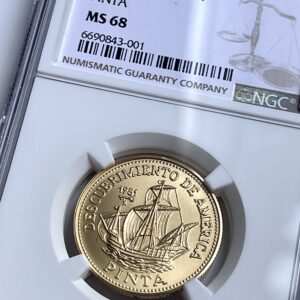
Cuba – 1981 – 100 Pesos – Pinta – NGC MS68
1.400,00 €plus shippingDelivery Time: approx. 2-3 days (excluding Saturdays, Sundays and public holidays) -
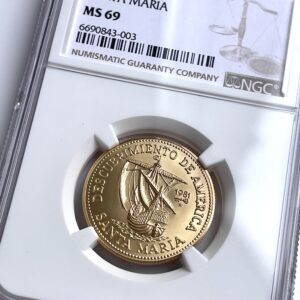
Cuba – 1981 – 100 Pesos – Santa Maria – NGC MS69
1.400,00 €plus shippingDelivery Time: approx. 2-3 days (excluding Saturdays, Sundays and public holidays)

